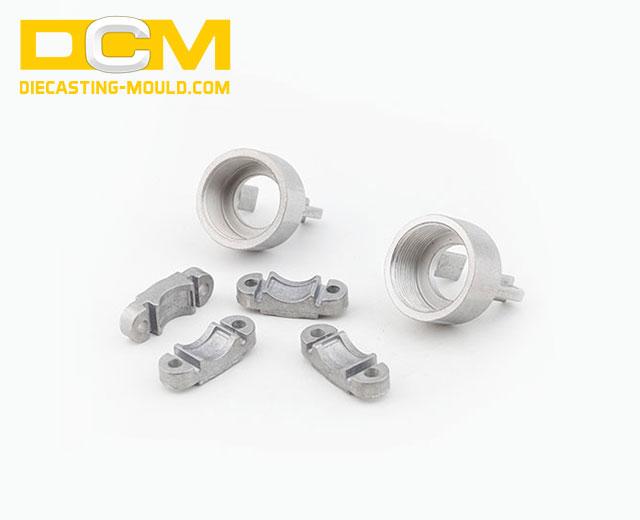A familiarity with and experience working with electrical discharge machining (EDM) for die-casting molds is desirable

When the electrode is used to touch the workpiece, it is common practice to forget about the workpiece itself. This is because the electrode is the focus of attention.The degree of accuracy achieved in the edge finding and centering processes will be directly proportional to the degree to which these two factors can be taken into account.
1) Clamp the workpiece; 2) Place a reference ball on the workbench; 3) Install the probe on the spindle head; 4) Make use of the probe to center the workpiece; 5) Make use of the probe to center the reference ball; 6) Remove the probe and install the electrode; 7) The subsequent electrodes are all centered on the reference ball.
Because the centering process is all about making point-to-point sensing contact, it is possible to achieve high-precision positioning accuracy at the m level. m is the SI unit for millimeters.
2. When constructing the electrodes, you should make sure to zinc die casting always use the same kind of material throughout the process.
The majority of die-casting factories in the United States make use of red copper as the material for their electrodes.Have you ever given any thought to the advantages that graphite electrodes bring to the table in the quest for high-efficiency processing in this modern world?In point of fact, this comprehension is either one-sided or stubbornly adheres to an outmoded concept of molding.Because it has the potential to cut by approximately one half the amount of time needed for machining processes such as milling electrodes or electric discharge machining.Processing graphite with a grain size of less than 4 micrometers is not an appropriate use for this type of processing.When performing electrical discharge machining on components that have a high value-added content, it is possible to achieve smaller electrode losses by utilizing more pricey copper-tungsten alloys. This can be done to reduce the amount of material that is lost during the machining process.This is something that can be done to reduce the amount of material that is wasted throughout the process.When working with carbide workpieces, it is especially important to keep this in mind at all times.Despite the fact that many factories have switched to using CNC discharge machines instead of the older style of machine, the electrode spark position process still refers to the older style of machine. This is because the process was developed using the older style of machine.on one of the faces it is 06 millimeters.Due to the relatively low electrode spark position, the CNC discharge machine has a severely restricted capacity to use a larger current for high-speed machining. This limitation prevents the machine from achieving its full potential.The method in question will be discussed in more detail further down.
4. The process of installing and adjusting electrodes in die casting mould die-casting machines is traditionally done by hand using traditional chucks.
Die production is another function of these factories.Both the ease with which it can be implemented and the fact that it can be put to good use are factors that have led to its widespread adoption.Some die-casting factories continue to use conventional chucks despite the fact that they have invested hundreds of thousands of dollars in CNC discharge machines.Because traditional manual chucks are not very effective, the actual utilization rate of machine tools is not very high when the machines are equipped with these types of chucks. This is because traditional manual chucks are not very efficient.In point of fact, a good horse needs a good saddle, and the CNC machine ought to be outfitted with a 3R quick clamping and positioning fixture. Both of these things are required for optimum performance.Following the completion of the cutting process, one type of machining that is frequently performed involves discharging the remaining tool R angle in order to clear space for the subsequent cut.
In the event that it takes place, the phenomenon known as local electrode loss will take place.
If the electrical discharge machining (EDM) of die-casting molds in the die-casting factory are all large-area types and the surfaces are required to be below VDI18, a uniform spark texture is required, which is comparable to a TV remote control type cavity. In this scenario, the die-casting factory must be able to meet both of these requirements.If this is the case, the process of machining with electrical discharge must be very challenging.The powder mixing processing technology is something that should be considered if the work involves the batch EDM processing of large-area and large-cavity molds.This technology has the potential to significantly improve the processing efficiency, making it much simpler to obtain large-area fine textures or mirror surfaces. This could be a game-changer in the industry.However, the requirements for the die-casting molds that are manufactured at other die-casting factories are significantly more stringent than those at our facility.In this particular circumstance, mold electric discharge machining is working hard to fulfill the prerequisites established by VDI18 (Ra0.To put it another way, this situation is a catch-22.The vast majority of the processed parts that will need to be polished in the future have the potential to reach VDI22 (Ra1) specifications.It is important to stress the fact that when high-quality matte surface requirements are pursued below VDI22, not only will the discharge time significantly increase, but the electrode loss will also increase. This is the point that needs to be emphasized here.This is something that needs to be brought to everyone's attention.
- Art
- Causes
- Crafts
- Dance
- Drinks
- Film
- Fitness
- Food
- Games
- Gardening
- Health
- Home
- Literature
- Music
- Networking
- Other
- Party
- Religion
- Shopping
- Sports
- Theater
- Wellness


